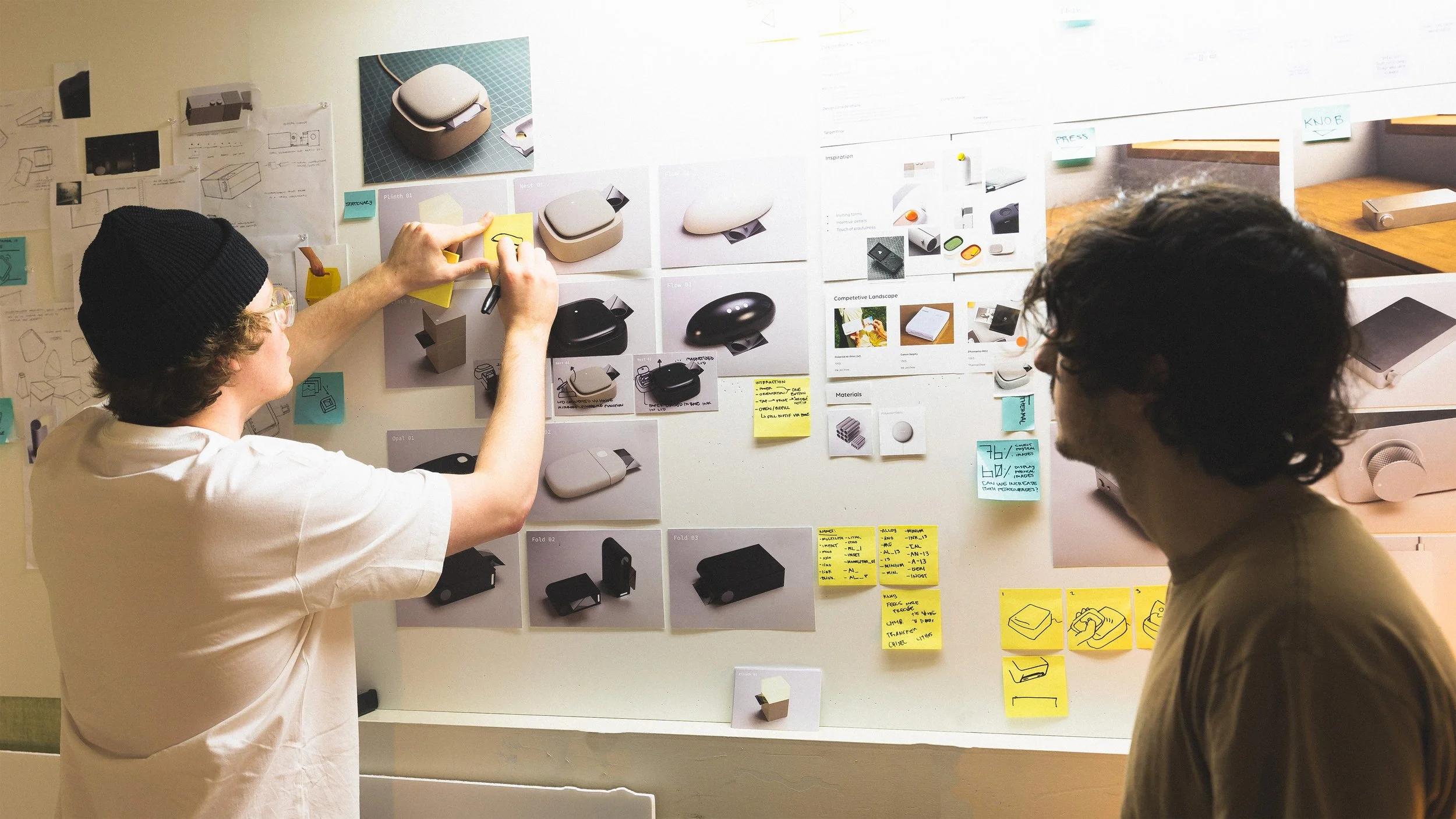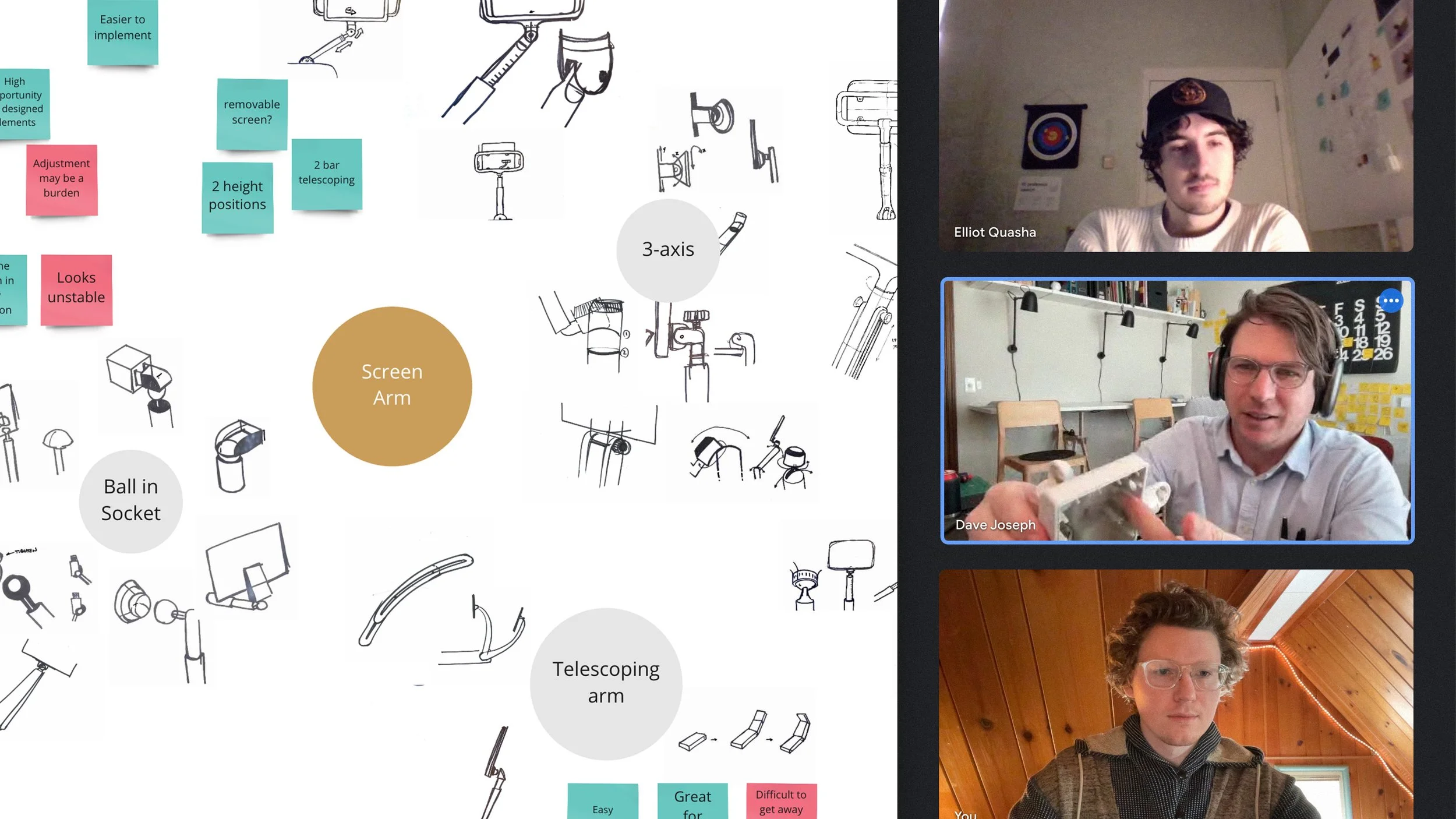Collaboration at Camp
3/1/2023
Written by Norman Rockwell
In the past year, I've practiced design in many environments such as a 12-student Industrial Design cohort, a 6,000-person corporation, and a remote design consultancy called Camp.
My first impression of Camp was how much I enjoyed its collaborative environment and after a year of being on the team, I’ve witnessed project after project successfully delivered to our clients, despite the team’s locations being spread from Alaska to Illinois at times.
Going from design school to design consultancy, I’ve learned a few important principles about collaboration that are key to Camp’s work.
Openness
Openness to the perspectives of others is essential to design. We’ve all heard these words before, but it deserves to be reiterated due to collaborative pitfalls that reduce openness in teams, especially in a designer’s formative years.
My industrial design program at Western Washington University only accepts 12-students into the major each year, which leads to a highly competitive environment. At times, we thought that giving feedback would better other’s chances of being accepted into the program or taking feedback from others might reduce the originality of our work. This caused some students to work in isolation and on some occasions, design reviews where students were just trying to have their ideas heard. In the end, the most successful students were the ones who openly collaborated, helped others, and received feedback graciously.
At Camp, we believe that the best collaboration comes from openness and we put that into practice. When one designer has a good idea or sparks an idea for someone else, we build off of that. This allows us to generate many new ideas during our meetings and create an environment where everyone feels open to finding the best ideas, especially when they’re not our own.
Best idea wins
A consistent way to design successful products is by generating many ideas as a team and sifting through to find the best ones. This process may sound simple, but how an idea is communicated and who is communicating it impacts the evaluation of it.
Camp and its founder, Dave Joseph, do a great job of ensuring that the best ideas rise to the top by separating the ideas from the designers. Every design review, I’m motivated to contribute because my ideas are given equal weight.
At Camp, the idea is more important than the individual. One way we focus on the idea is to all use sharpie markers when sketching to communicate our ideas. This maintains a consistent sketch quality between designers and creates consistent visuals for our clients to consider.
Unifying mission
The best product designs are often guided by a powerful story that fulfills a mission of the team. However, poor communication and differing missions in a team can hinder collaboration, especially at corporations where projects span many years and departments.
At GE Appliances, I was challenged to become a better communicator of product stories. I often started projects with developing a story that conveys the product's value. This story guided the collaboration of managers, designers, engineers, and marketers. However, it was much more difficult to work towards a common goal if my story wasn’t communicated well or if the team had different missions. After dozens of projects at GE Appliances, I found that the most successful ones always had a clear and powerful story that achieved a unifying mission of the team. When everyone is creating and measuring value the same way, great design can happen.
Our mission at Camp is to design ambitious ideas with practical solutions. To us, this means that our designs must be ambitious in how they benefit people’s lives, in addition to being practical for manufacturability and the client’s business. When collaborating, the Camp team works together to achieve practical ambition and when a design achieves it, we’re all happy campers.



